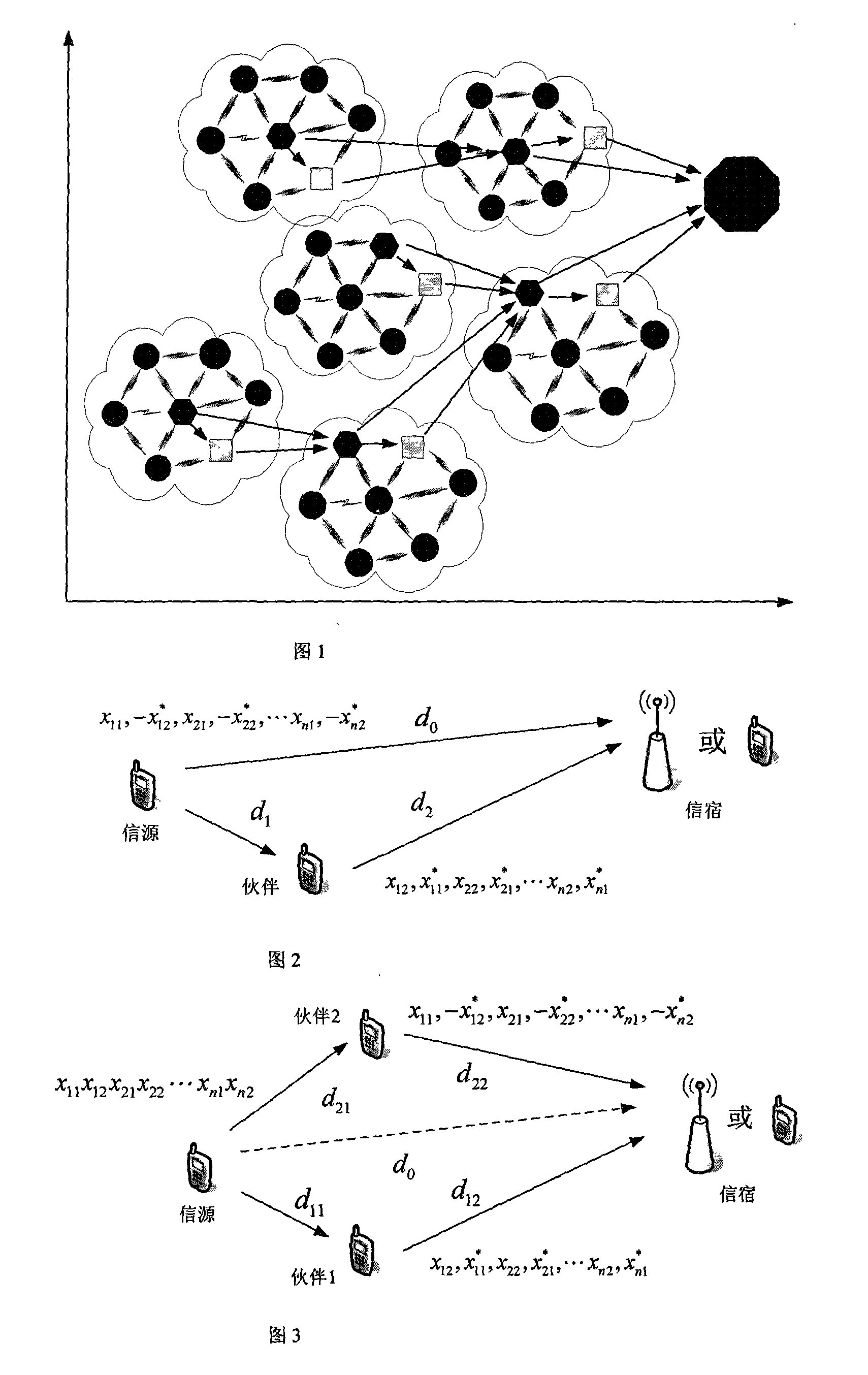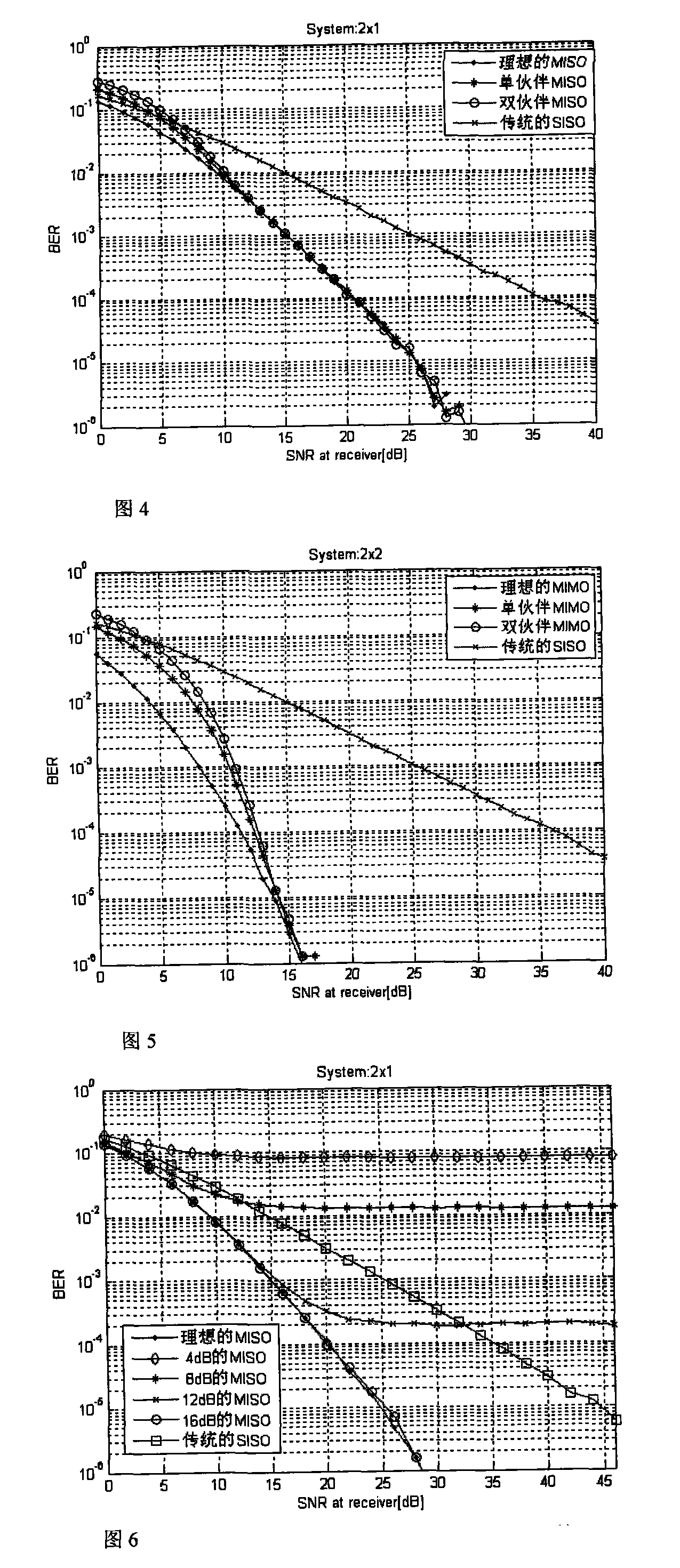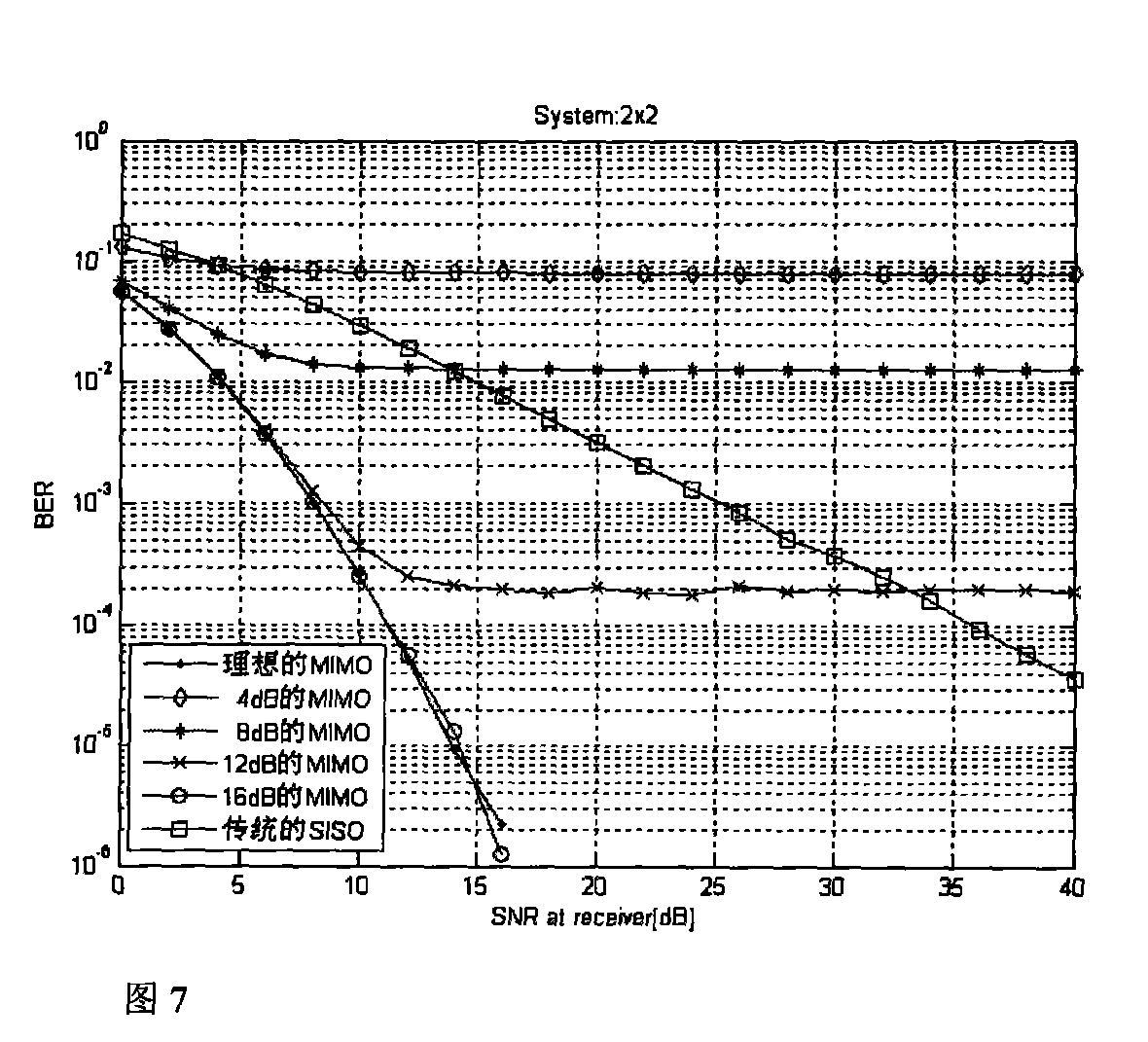Wireless sensor network collaboration diversity scheme based on distributed space time packet coding and decoding forward
A technology of wireless sensor network and space-time block coding, which is applied in the field of wireless sensing, can solve problems such as difficulty in synchronous coordination, low diversity efficiency, complex design, etc., and achieve good collaboration effect, high diversity gain, and simple effect
- Summary
- Abstract
- Description
- Claims
- Application Information
AI Technical Summary
Problems solved by technology
Method used
Image
Examples
Embodiment Construction
[0019] The present invention will be further described below with reference to the accompanying drawings and embodiments.
[0020] As shown in Figure 1, the large-scale single-antenna sensor network nodes have been clustered according to a certain mechanism. The dotted box in the figure represents a cluster in the network, the circle represents the sensor network node, and the hexagon is the source node. , the square is the partner node, and the octagon is the gathering node of the sensor network node data, that is, the sink, which can be multi-antenna or single-antenna.
[0021] Figure 2 shows the situation of single-partner cooperative communication. In the first time slot, the source node divides the original data into data frames x with a length of 2n 11 x 12 x 21 x 22 …x n1 x n2 , and encoded into x by the first row of the Alamouti encoding matrix 11 , -x 12 * , x 21 , -x 22 * ,...x n1 , -x n2 * In the second time slot, the partner node decodes the received ...
PUM
 Login to View More
Login to View More Abstract
Description
Claims
Application Information
 Login to View More
Login to View More - R&D
- Intellectual Property
- Life Sciences
- Materials
- Tech Scout
- Unparalleled Data Quality
- Higher Quality Content
- 60% Fewer Hallucinations
Browse by: Latest US Patents, China's latest patents, Technical Efficacy Thesaurus, Application Domain, Technology Topic, Popular Technical Reports.
© 2025 PatSnap. All rights reserved.Legal|Privacy policy|Modern Slavery Act Transparency Statement|Sitemap|About US| Contact US: help@patsnap.com



